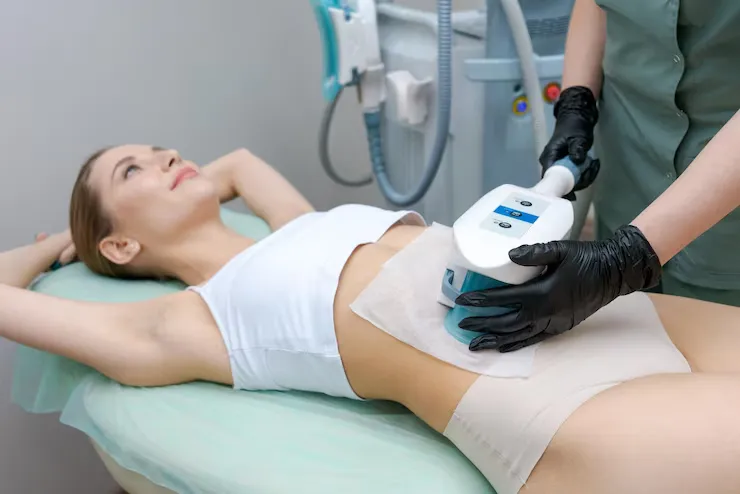Nasal Release Technique in Bedford, TX
Discover the Power of Nasal Release Technique in Bedford, TX
Are you tired of struggling with persistent headaches, sinus congestion, or facial pain? Do you constantly struggle to breathe freely, affecting your sleep, work, and overall quality of life? You’re not alone if you’re nodding along, feeling the weight of these daily challenges. Countless individuals in Bedford, TX, and beyond grapple with these issues, often believing they’re simply a part of life they must endure.
But what if we told you there’s a gentle, non-invasive technique that could potentially unlock relief and restore balance to your body? Welcome to the world of Nasal Release Technique (NRT) at Bortnick Therapy Enterprises, where we’re changing lives one breath at a time.
Imagine waking up each morning, taking a deep, clear breath, and facing the day without the familiar pressure in your head or the nagging discomfort in your face. Picture yourself free from the constraints of chronic sinus issues or the lingering effects of a concussion. This isn’t just a dream – it’s the reality we strive to create for our patients through the innovative Nasal Release Technique.
But here’s the burning question: How can a technique focusing on your nasal passages profoundly impact your overall well-being? And more importantly, could this be the solution you’ve been searching for?
As we delve into the details of the Nasal Release Technique, prepare to challenge your assumptions about physical therapy and discover a world of possibilities you might never have imagined. Whether you’re an athlete looking to optimize your performance, an office worker plagued by tension headaches, or someone recovering from a head injury, NRT could be the missing piece in your health puzzle.
Are you ready to breathe easier, think clearer, and live better? Let’s explore how Nasal Release Technique at Bortnick Therapy Enterprises is revolutionizing patient care in Bedford, TX, and why it might just be the breakthrough you’ve been waiting for.
Understanding Nasal Release Technique: Your Path to Better Health
What is the Nasal Release Technique?
Nasal Release Technique (NRT) is a specialized form of manual therapy that focuses on relieving tension and improving structural balance by addressing restrictions in the nasal passages and skull. This innovative approach goes beyond traditional physical therapy methods, tapping into the intricate connections between your nasal passages, cranial structures, and overall body function.
At its core, NRT involves gently manipulating the nasal passages to alleviate pressure in the head, neck, and face. This non-invasive technique enhances airflow, promotes better breathing, and improves overall cranial function. But how exactly does it achieve these remarkable results?
The Science Behind the Technique
To truly appreciate the power of Nasal Release Technique, it’s essential to understand the interconnectedness of our body’s systems. The nasal passages are not just simple airways; they’re intricately linked to our nervous system, cranial structures, and even our posture.
When we experience trauma, stress, or chronic tension, it can create restrictions in the soft tissues and bones of the skull. These restrictions can lead to a domino effect of symptoms, including:
- Reduced airflow through the nasal passages
- Increased pressure in the sinuses and cranial cavity
- Misalignment of cranial bones
- Tension in the muscles of the face, neck, and jaw
- Disruption of the body’s natural rhythms and fluid dynamics
Nasal Release Technique works to address these issues at their source. By gently manipulating the nasal passages, our skilled therapists can:
- Release restrictions in the soft tissues
- Improve mobility of the cranial bones
- Enhance lymphatic drainage
- Stimulate the parasympathetic nervous system
- Promote better overall cranial function
The result? A cascade of positive effects that can lead to significant improvements in a wide range of symptoms and conditions.
Who Can Benefit from Nasal Release Technique?
One of the most remarkable aspects of NRT is its versatility. At Bortnick Therapy Enterprises, we’ve seen this technique transform the lives of patients from all walks of life, including:
- Office workers struggling with tension headaches and poor posture
- Athletes looking to optimize their breathing and performance
- Individuals recovering from concussions or other head injuries
- Chronic sinus sufferers seeking relief from congestion and pressure
- Patients with TMJ disorders and facial pain
- Those experiencing sleep disturbances due to breathing issues
Regardless of your age, gender, or specific condition, if you’re dealing with any of these issues, Nasal Release Technique could be the key to unlocking a healthier, more comfortable you.
The Life-Changing Benefits of Nasal Release Technique
At Bortnick Therapy Enterprises, we’re committed to providing our patients in Bedford, TX with the most effective, evidence-based treatments available. Nasal Release Technique has consistently proven to be a game-changer for many of our patients. Here’s a closer look at the key benefits you can expect:
1. Relief from Headaches and Sinus Issues
Chronic headaches and sinus problems can be debilitating, affecting every aspect of your daily life. Nasal Release Technique offers a powerful solution by addressing these issues at their root cause.
- Migraine Relief: A study published in the Journal of Manual & Manipulative Therapy found that patients receiving cranial manual therapy, similar to NRT, experienced a significant reduction in migraine frequency and intensity.
- Sinus Pressure Alleviation: By improving drainage and reducing inflammation in the nasal passages, NRT can provide rapid relief from sinus pressure and congestion. Research in the field of manual therapy suggests that techniques targeting the nasal and cranial areas may help improve drainage and reduce inflammation in the nasal passages, potentially providing relief from sinus pressure and congestion.
2. Improved Breathing and Airflow
Breathing is fundamental to life, yet many of us don’t realize when we’re not doing it optimally. Nasal Release Technique can dramatically improve your breathing mechanics, leading to:
- Enhanced oxygen intake and delivery to tissues
- Improved athletic performance and endurance
- Better sleep quality
- Reduced snoring and sleep apnea symptoms
Research published in the International Journal of Pediatric Otorhinolaryngology demonstrated that techniques targeting nasal passages could significantly improve nasal airflow and reduce symptoms of nasal obstruction.
3. Reduced TMJ Dysfunction and Facial Tension
The intricate connection between your nasal passages, jaw, and facial muscles means that NRT can have a profound impact on TMJ disorders and facial tension.
- TMJ Relief: By releasing restrictions in the cranial area, NRT can help alleviate the root causes of TMJ dysfunction, reducing pain and improving jaw mobility.
- Facial Relaxation: Many patients report a noticeable reduction in facial tension and a more relaxed expression following NRT sessions.
4. Enhanced Recovery from Post-Concussion Symptoms
For those recovering from concussions or other head injuries, Nasal Release Technique can be a crucial part of the healing process.
- Symptom Reduction: Many patients report faster resolution of post-concussion symptoms like dizziness, headaches, and cognitive fog.
- Improved Cranial Circulation: NRT can help restore proper blood flow and cerebrospinal fluid dynamics, supporting the brain’s healing process.
A case study published in the Journal of Bodywork and Movement Therapies highlighted the effectiveness of cranial manual therapy in reducing symptoms and improving the quality of life for a patient with post-concussion syndrome.
Frequently Asked Questions About Nasal Release Technique
How does the Nasal Release Technique work?
Nasal Release Technique gently manipulates the bones and soft tissues of the nasal passages and surrounding cranial structures. Our skilled therapists use their fingers to apply precise pressure and movements inside the nasal cavity, targeting specific points known to affect cranial function.
This process helps to:
- Release restrictions in the soft tissues
- Improve mobility of the cranial bones
- Enhance lymphatic drainage
- Stimulate the parasympathetic nervous system
By addressing these key areas, NRT can have far-reaching effects on your overall health and well-being, from improved breathing to reduced pain and enhanced cognitive function.
Is the Nasal Release Technique safe and comfortable?
Safety and comfort are our top priorities at Bortnick Therapy Enterprises. Nasal Release Technique is a gentle, non-invasive procedure that’s generally well-tolerated by most patients. Here’s what you can expect:
- Gentle Approach: Our therapists use careful, controlled movements to ensure your comfort throughout the procedure.
- Customized Treatment: We tailor the technique to each patient’s individual needs and comfort level.
- Minimal Side Effects: Most patients experience no side effects. Some may have mild, temporary discomfort or a feeling of pressure during the procedure.
- Professional Expertise: All our therapists are extensively trained in NRT and have a deep understanding of cranial anatomy.
While the idea of having someone work inside your nasal passages might seem unusual at first, most patients find the experience to be surprisingly relaxing and often report immediate relief from symptoms.
What conditions can Nasal Release Technique help with?
Nasal Release Technique has shown effectiveness in addressing a wide range of conditions, including:
- Chronic headaches and migraines
- Sinus congestion and sinusitis
- TMJ disorders
- Post-concussion syndrome
- Sleep apnea and snoring
- Facial pain and tension
- Neck pain and stiffness
- Vertigo and balance issues
- Tinnitus (ringing in the ears)
- Certain types of tooth pain
It’s important to note that while NRT can be highly effective, it’s often used as part of a comprehensive treatment plan. During your consultation at Bortnick Therapy Enterprises, we’ll assess your specific condition and determine if Nasal Release Technique is the right approach for you.
Meet Our Expert Team
At Bortnick Therapy Enterprises, we’re proud to have a team of highly skilled and compassionate therapists dedicated to bringing you the best in innovative care. Our Nasal Release Technique specialists include:
- Dr. Leah Bortnick, PT, DPT
Our team’s extensive training and experience in Nasal Release techniques ensure that you’re in the best hands possible for your treatment journey.
Your Next Steps to Better Health
Are you ready to experience the transformative power of Nasal Release Technique? Here’s how you can get started on your path to better breathing, reduced pain, and improved overall well-being:
- Schedule a Consultation: Call us at (817) 725-3257 or use our online booking system to set up your initial consultation. We’ll assess your condition and determine if NRT is right for you.
- Prepare for Your Visit: Before your appointment, make a list of your symptoms, medical history, and any questions you have. This will help us tailor our approach to your specific needs.
- Experience the Technique: During your session, our expert therapist will guide you through the Nasal Release Technique, ensuring your comfort every step of the way.
- Follow-Up Care: We’ll work with you to develop a comprehensive care plan, which may include follow-up NRT sessions, complementary therapies, and at-home exercises to maximize your results.
Don’t let breathing difficulties, headaches, or facial pain hold you back any longer. Take the first step towards a healthier, more comfortable you with Nasal Release Technique at Bortnick Therapy Enterprises in Bedford, TX.
Contact us today at (817) 725-3257 or visit our Request an Appointment page to learn more and schedule your appointment. Breathe easier, live better – your journey to optimal health starts here!






























